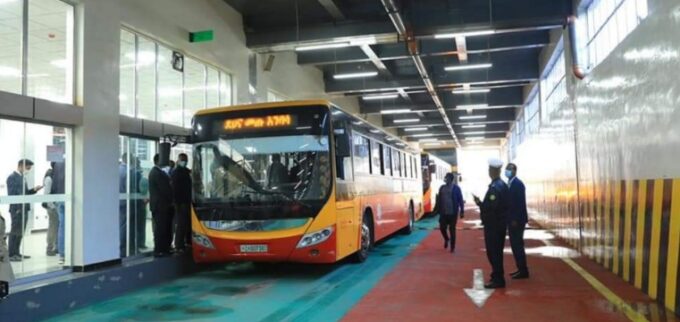
BY STAFF REPORTER
Addis Ababa is believed to be home to about 3 million people. As a capital city of the country of 100 million people, as well as hub of business and industry as well as many international organizations, the city is full of bustles of people and vehicles.
As a result of the increasing number of population, the rapidly growing economic and business activities the city is becoming more congested. Among other things this has made transportation in the city very complicated and time taking. Transportation is a cross cutting issue in the life of the urban population.
Hence putting in place a mechanism to address the sluggish transportation system is a vital issue in addressing multifarious issues like ease of commuting in the city which saves time and cost for the population, reduce the use of private small vehicles there by contributing to the reducing of global warming and carbon emission, among others.
For this end the Addis Ababa City administration has carried out an exemplary project in modernizing and simplifying the urban transportation system. The new city bus terminal at Mercato is designed to enhance mass transportation service provided by different buses as points of departure and arrival.
It was indicated that the facility has a capacity to accommodate at least 20 buses at a time and has a modern transport system infrastructure that monitors the city’s bus operations system.
The two mainstream city bus companies Ambessa Bus and Sheger Bus enterprises daily maneuver hundreds of city buses to commute thousands of passengers to various corners and neighboring towns of the city. They carry out the transportation service amid formidable challenges like traffic jam as well as congestion at terminals.
Among the busiest terminals in the city is the one at Mercato. It is a departure and arrival terminal for more than 50 routes where hundreds of busses converge daily to pick up tens of thousands of passengers. The facility is expected to serve more than 6,000 public transport users and a total of 80,000 passengers per day.
Over all, public transportation is an important contributing factor to urban sustainability. Urban transportations that increase affordability, accessibility, and connectivity, while incorporating good land use planning and environmental considerations significantly contribute to urban sustainability.
Effective transportation networks that incorporate public transit help lower a city’s per capita carbon footprint, and make cities more livable by easing commute and transportation needs and increasing accessibility.
Holistic transportation, land use planning, and planning with the environment in mind means that transportation systems include many elements including streets, sidewalks or pedestrian networks, transit, bicycle routes, plus private and public fleets. Those elements interface effectively with both the physical geography and commercial and residential development, and account for other environmental factors such as seasonal trends and extreme weather.
Increasing urbanisation is putting pressure on infrastructure in cities around the globe. In the developed world, competition for space to serve the transport needs of city centres is increasing, at the same time as governments are investing in more sustainable transport modes, such as walking, cycling and public transport modes like light rail and bus rapid transit. Another clear trend in many cities is increasing pedestrianisation, which is often achieved by reducing space allocated for vehicles.
In the developing world, increases in vehicle ownership are leading to worsening traffic congestion and declining mode share for sustainable transport modes.
In many cities, particularly smaller ones, buses will continue to perform a critical role in supporting the economic and social life of the city.
In the developed and developing world, buses must compete with private vehicles (often by providing enhanced services and facilities), in an environment with increasingly less space. However, some relatively simple public transport operational and management approaches can substantially reduce the amount of space required for bus terminals and interchanges and provide additional passenger benefits. Where this approach has been implemented, savings of space of greater than 50 percent have been achieved.
The main beneficiaries of more compact bus terminals and interchanges are public transport passengers and transport and city managers. The former benefit from reduced walking and transfer distances, better integration of facilities with their surroundings and increased safety, while the latter from a better use of space for a critical function, making bus facilities more compatible with other city sustainable transport goals.
THE ETHIOPIAN HERALD JULY 14/2021





